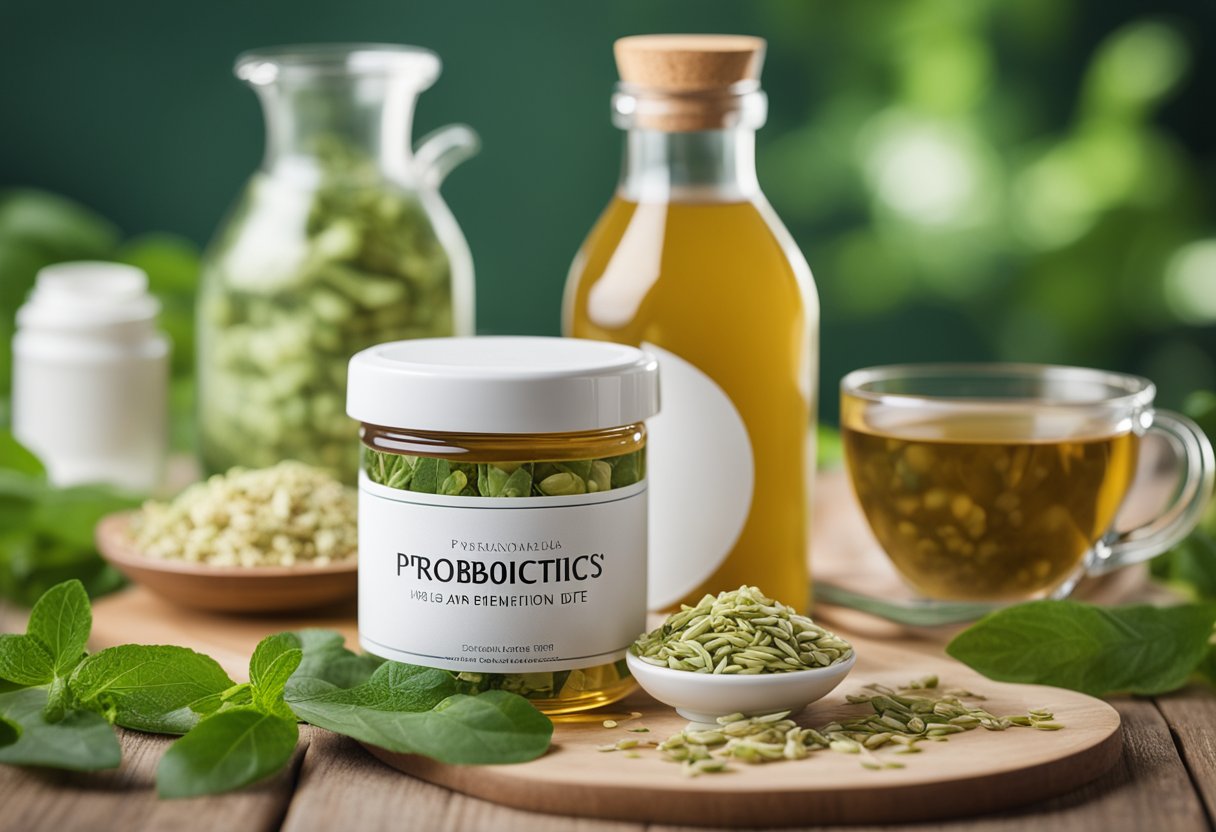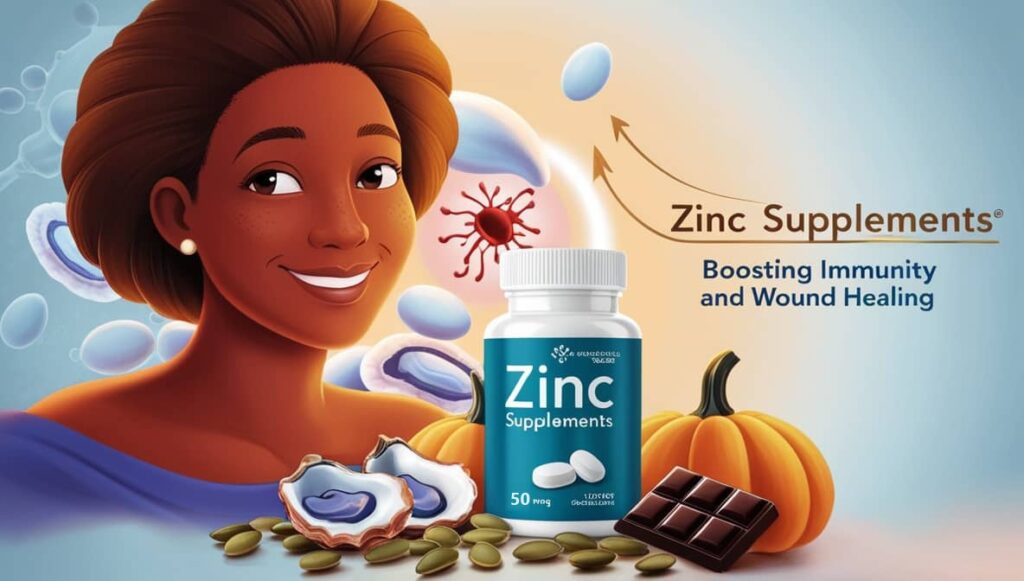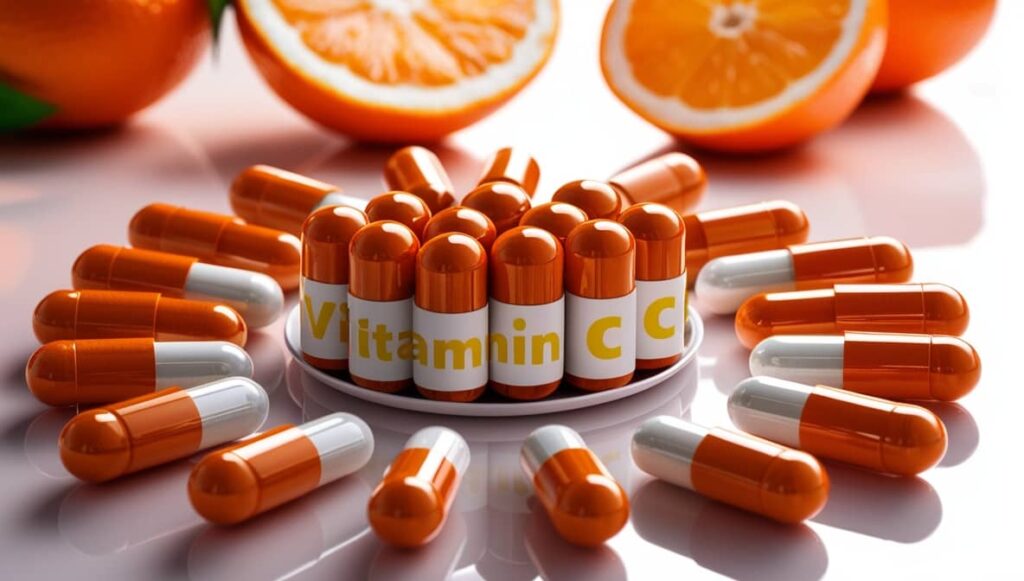What are Probiotics?
Probiotics contain live bacteria that can have some beneficial effects on or inside the body. They serve to control possibly harmful bacteria. They may be in the form of topical treatments for the skin and mucous membranes in body cavities or as oral dietary supplements for the digestive system. These helpful microorganisms are known to be present in the gastrointestinal tract, nose, and genitals.
How do Probiotics Work in the Body?
They promote better digestion and nutrient absorption, support the immune system, and fight against harmful bacteria and viruses. By building a barrier against dangerous microbes, probiotics can serve as gut-beneficial bacteria. Additionally, they can counteract bacterial imbalances induced by antibiotics, which destroy both beneficial and harmful bacteria, causing diarrhea, cramps, or indigestion and bloating. For more specific strategies to soothe digestive discomfort, check out our guide on how to calm inflamed intestines.
Probiotics also help digest fat and protein, which is good for kids and patients who want more energy.
Nevertheless, since various forms of probiotics have distinct biological effects and are not subject to FDA oversight, they are not all identical. For choosing the best probiotics for a particular condition, consultation with an experienced healthcare professional is advisable.
Types of Probiotics
-
- Lactobacillus acidophilus → Releases lactacin F bacteriocin, which is an antibiotic against numerous bacteria.
- Lactiplantibacillus plantarum → Produces plantaricins, which are a broad-spectrum antibiotic against many kinds of bacteria.
- Lacticaseibacillus casei → Releases caseicin, which is effective against other Lactobacillus species and harmful microbes.
- Ligilactobacillus salivarius → Produces salivaricins, which are antibacterial against infections of the oral cavity.
- Limosilactobacillus reuteri → Releases reuterin, a powerful antibacterial molecule that suppresses bacteria, fungi, and protozoa.
- Bifidobacterium spp. → Produces bifidocins, which are beneficial against E. coli, L. monocytogenes, S. aureus, yeasts, and competing gut microbes.
- Pediococcus pentosaceus → Possesses probiotic properties, including antibacterial action against L. monocytogenes (PE-ZYB1).
Proven Probiotics Benefits for the Gut and Immunity
1. The Antiallergic and Cancer-Suppressing Properties
Probiotics may contribute to the process of sensitivity and allergy by modulating the immune system and inflammatory response. They inhibit carcinogenesis through suppressing infections, promoting the generation of short-chain fatty acids, and promoting apoptosis.
Lactobacillus and Bifidobacterium species demonstrate both antiallergic and cancer-fighting capacity. Lactobacillus plantarum, for example, and other Lactobacillus strains can influence the immune system, supporting it in the fight against allergies and cancer. Lactobacillus acidophilus and Bifidobacterium bifidum have direct cytotoxic effects on particular cancer cell lines.
2. The Hypocholesterolemic Effect of Probiotics
Probiotics may help reduce blood cholesterol levels directly or indirectly. They deconjugate bile salts through the formation of bile salt hydrolase (BSH) and prevent the synthesis of cholesterol by hypocholesterolemia factors. Probiotics from the Lactobacillus and Bifidobacterium genera, particularly Lactobacillus acidophilus, Bifidobacterium longum, and Enterococcus faecium, have been demonstrated to display hypocholesterolemic features. Other strains, such as Lactobacillus fermentum and Lactobacillus plantarum, additionally showed cholesterol-lowering properties.
3. Effect on Intestinal Problems
The GI tract is the main site for the absorption of nutrients and digestion. An efficient approach to treating gastrointestinal conditions may involve restoring healthy gut flora. Lactobacillus, Bifidobacterium, and Saccharomyces boulardii are the most commonly examined probiotics for irritable bowel syndrome (IBS), with different strains exhibiting advantages for various symptoms. For example, Bifidobacterium lactis might help with both constipation and diarrhoea, whilst Saccharomyces boulardii is especially beneficial for diarrhea-predominant IBS (IBS-D). Managing your diet is also crucial; a structured plan can be very helpful. Lactobacillus plantarum and Bifidobacterium longum have additionally demonstrated promise in relieving general symptoms such as discomfort and bloating.
Benefits of Different Probiotic Strains on Intestinal Health and Energy Metabolism
| Probiotics strain | Effect |
| Lactobacillus rhamnosus GG | Optimizes mineral absorption, maintains immunological responses, and supports the intestinal barrier. |
| Bifidobacterium lactis BB-12 | Promotes the generation of SCFA, boosts immunological response, and decreases intestinal inflammation. |
| Lactobacillus acidophilus La-5/L. acidophilus DDS-1 | Enhances mineral absorption, decreases symptoms of lactose intolerance, improves digestion, and stimulates the production of Short-Chain Fatty Acids (SCFA). |
| Bifidobacterium longum BB536 | Facilitates the absorption of calcium and iron, adjusts the intestinal microbiota, minimizes gastrointestinal distress, and promotes the production of SCFA. |
| Lactobacillus plantarum 299v/L. plantarum 2362 | Helps with mineral absorption, suppresses inflammation, and maintains the intestinal barrier |
| Bifidobacterium bifidum Bf-688 | Promotes the generation of SCFA, reduces inflammation, increases vitamin absorption, and maintains gut microbiota balance |
The Best Natural Probiotic Foods to Add to Your Diet
1. Yogurt
Yoghurt, made from milk fermented by probiotics, is a good source of probiotics. It contains Streptococcus thermophilus and Lactobacillus delbrueckii ssp. It offers health benefits such as improved bone, heart, and gastrointestinal health, reduced diabetes risk, and weight management. While adding yogurt is beneficial, it’s equally important to know which foods to avoid for optimal colon health.
It may be suitable for people with lactose intolerance, as the bacteria turn some lactose into lactic acid.
2. Pickles
Pickles are cucumbers preserved in a solution of salt and water, which are a great source of healthy probiotic bacteria such as lactic acid bacteria (LAB), including Pediococcus pentosaceus, Lactobacillus plantarum, Lactobacillus brevis, and Lactobacillus pentosus. Identifying Leuconostoc mesenteroides and several Bacillus species, particularly in traditional and mixed pickles, is possible.
3. Traditional Buttermilk
Traditional buttermilk is the leftover liquid from making butter; only this version contains probiotics. The most common lactic acid bacteria include Lactobacillus acidophilus, Pediococcus pentosaceus, and Lactococcus lactis. Bifidobacterium bifidum, Lacticaseibacillus paracasei, and Lactiplantibacillus plantarum are even more probiotic bacteria that have been identified. Cultured buttermilk, commonly found in American supermarkets, generally does not have any probiotic benefits.
4. Natto
Natto is another fermented soybean product, rich in protein and vitamin K2, important for bone and cardiovascular health.
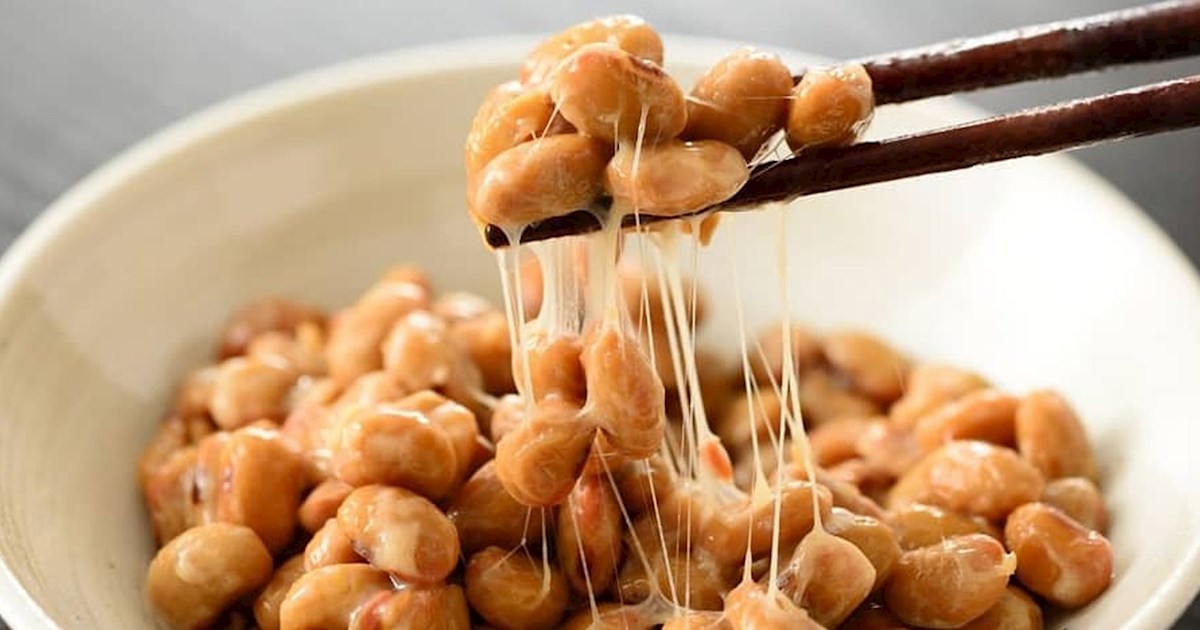
5. Some Types of Cheese
Cheese contains probiotics such as Lactobacillus and Bifidobacterium species, with various kinds depending on the cheese type and processing. Examples include Lacticaseibacillus casei in Cheddar, Lactobacillus acidophilus in Mozzarella and Feta, and Bifidobacterium animalis in Feta and Petit Suisse.
6. Kefir
Kefir is a fermented probiotic milk drink made by adding kefir grains to cow’s or goat’s milk. It contains a variety of probiotic bacteria and yeasts, including Lactobacillus kefiri, Lactobacillus kefiranofaciens, Lactococcus lactis, Bifidobacterium bifidum, and Saccharomyces cerevisiae. It may improve bone health, help with digestive problems, and protect against infections.
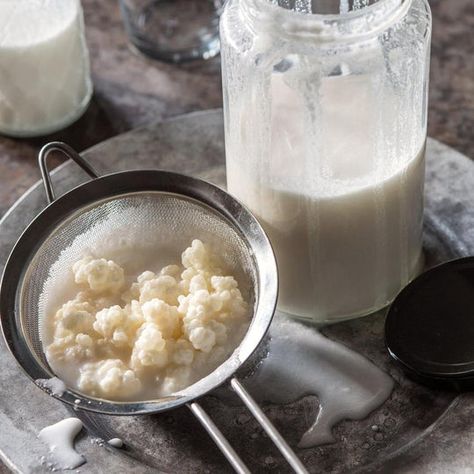
7. Kimchi
Kimchi is a fermented, spicy Korean dish. It contains the bacteria Lactobacillus kimchii and other lactic acid bacteria that may benefit digestive health.

8. Miso
Miso is a Japanese seasoning made by fermenting soybeans with salt and a fungus called koji. It contains probiotics like Aspergillus oryzae and Saccharomyces cerevisiae (a yeast). The specific probiotic species vary depending on the process of fermentation; however, A. oryzae is the most prevalent probiotic found in miso, derived from the koji mould used to ferment soybeans.
Miso is a good source of protein and fibre and high in various vitamins, minerals, and plant compounds.
9. Kombucha
Kombucha is a fermented black or green tea drink popular in many parts of the world, especially in Asia. It covers a range of probiotics, including acetic acid bacteria, lactic acid bacteria, and yeast. Komagataeibacter and Gluconacetobacter are two common species, as are Bacillus coagulans and different Lactobacillus strains, as well as yeasts such as Saccharomyces. Some research suggests kombucha may reduce the risk of cancer, diabetes, and other diseases.
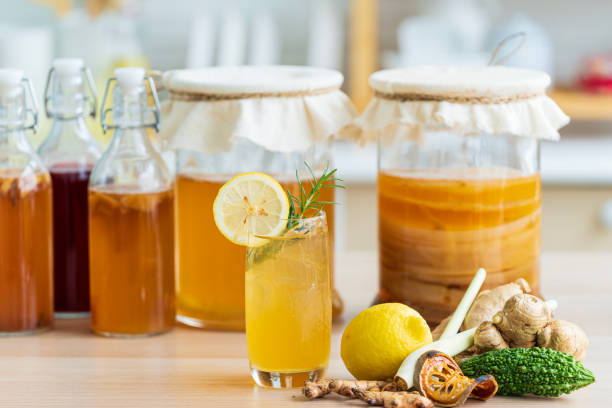
How can we Find Probiotics?
There are many types of probiotics. They may be in the form of liquids, powders, tablets, and fermented food items. They are readily accessible and available online as well as in many pharmacies and supermarket stores.
How to Choose the Right Probiotic Supplement for Your Needs
1. Quality and Safety
Most people consider probiotics to be safe, with only minor adverse effects.
Consult a doctor if you have a serious health problem or a weak immune system.
Probiotics are promoted as supplements rather than medications.
2. Selecting Suitable Types
There are three categories of bacteria: genus, species, and strain. When choosing a probiotic, all three names are important.
Don’t stop medical therapy because of probiotics; they may not prove effective for everyone.
3. Colony Forming Units (CFUs) Counting
The number of organisms in each dose is indicated by CFUs. Before the product expires, check the CFU count.
4. Reading the Label
Examine the label for crucial information such as the ingredients, dosage, storage instructions, and “use by” or expiration date.
Safety Considerations
In general, there are no major contraindications to probiotics, as most of the research suggests they are safe. However, some individuals should act carefully. Before starting, the elderly and those with weakened immunity should think about the probable adverse effects. It’s crucial for this group to be able to recognize the signs of a bacterial infection.
In addition, to avoid the introduction of bacteria, a thorough protocol should be followed during the insertion of central venous catheters.
References
- Gul, S., & Durante-Mangoni, E. (2024). Unraveling the Puzzle: Health Benefits of Probiotics-A Comprehensive Review. Journal of Clinical Medicine, 13(5), 1436. From MDPI.
- Gul, S., & Durante-Mangoni, E. (2024). Unraveling the Puzzle: Health Benefits of Probiotics-A Comprehensive Review. Journal of Clinical Medicine, 13(5), 1436. From MDPI.
- Shahrokhi M, Nagalli S. Probiotics. [Updated 2023 Jul 3]. In: StatPearls [Internet]. Treasure Island (FL): StatPearls Publishing; 2025 Jan-. Available from PubMed.
- Latif, A., Shehzad, A., Niazi, S., Zahid, A., Ashraf, W., Iqbal, M. W., Rehman, A., Riaz, T., Aadil, R. M., Khan, I. M., Özogul, F., Rocha, J. M., Esatbeyoglu, T., & Korma, S. A. (2023). Probiotics: mechanism of action, health benefits, and their application in food industries. Frontiers in microbiology, 14, 1216674. From Frontiers.

